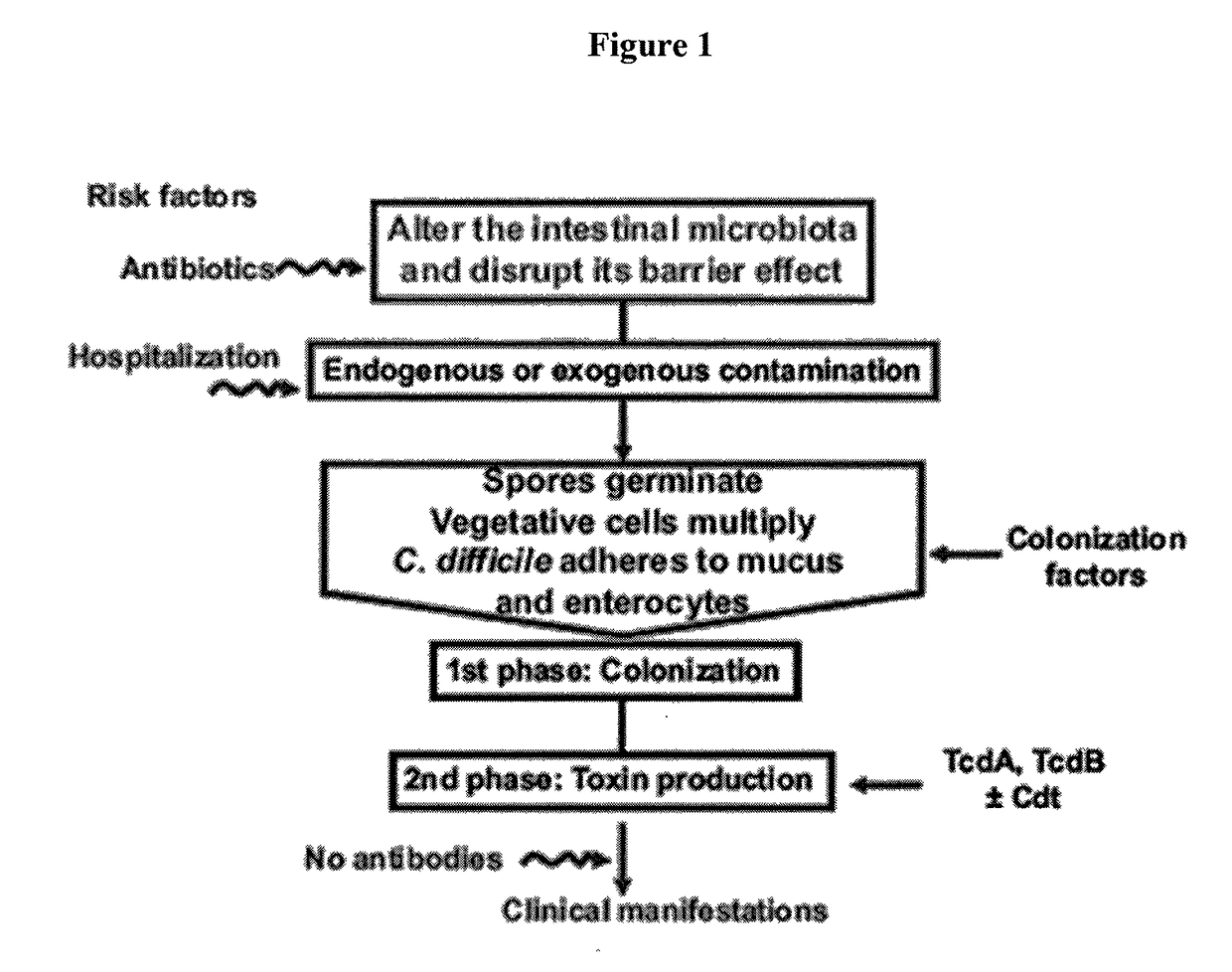Predictive value of clostridium difficile-specific immune response for recurrence and disease outcome
a technology of clostridium difficile and immune response, applied in the field of clost, can solve the problems of lack of quantitative assay, immunological studies, and substancial clinical difficulty in diarrhea after withdrawal of specific antibiotherapy, and achieve the effect of increasing the level of antibodies
- Summary
- Abstract
- Description
- Claims
- Application Information
AI Technical Summary
Benefits of technology
Problems solved by technology
Method used
Image
Examples
examples
1. Methods
[0172]1.1. Study Design, Subject Recruitment and Samples
[0173]In the context of a prospective study designed to demonstrate the passive acquisition of antibodies against C. difficile in newborns via placental transfer and breast-feeding, pregnant women were pre-included during their last pregnancy consultation and gave a written informed consent if they accepted to participate to the study. During delivery, mothers and their newborn were included (FIG. 3). The exclusion criteria were women under 18 years old, HIV-infected women, or women who were blood transfused during the last month before delivery. The Institutional Review Board (Comité de Protection des Personnes Ile de France) approved the study. Umbilical cord blood from newborns, blood and breast milk from their mothers were collected, centrifuged, aliquoted and frozen at −80° C. To identify the risk factors on an early carriage in newborns, meconium and newborn stools were sampled, as well as maternal stools that w...
PUM
| Property | Measurement | Unit |
|---|---|---|
| concentrations | aaaaa | aaaaa |
| molecular mass | aaaaa | aaaaa |
| v/v | aaaaa | aaaaa |
Abstract
Description
Claims
Application Information
 Login to View More
Login to View More - R&D
- Intellectual Property
- Life Sciences
- Materials
- Tech Scout
- Unparalleled Data Quality
- Higher Quality Content
- 60% Fewer Hallucinations
Browse by: Latest US Patents, China's latest patents, Technical Efficacy Thesaurus, Application Domain, Technology Topic, Popular Technical Reports.
© 2025 PatSnap. All rights reserved.Legal|Privacy policy|Modern Slavery Act Transparency Statement|Sitemap|About US| Contact US: help@patsnap.com



